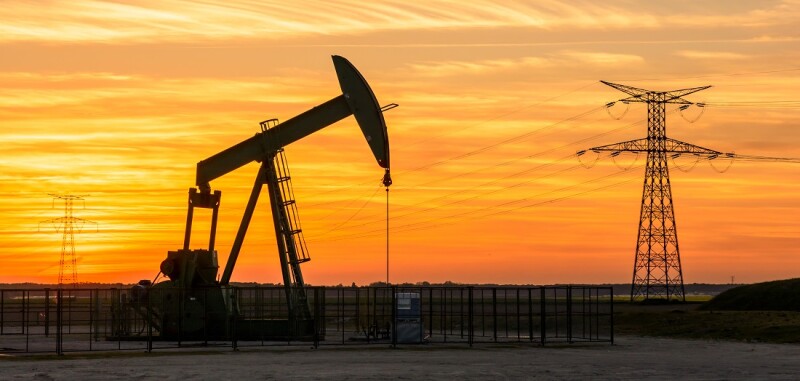Oilfield electrification offers benefits in many forms—and a lot of things to figure out, including finding cleaner sources of power in remote places.
All-electric fracturing spreads are an example of that potential. NOV said 5,000-hp units—twice the power of older units—can nearly halve the footprint needed to fracture a well, or even two at once with a simul-frac. And that power and torque runs quieter, can be controlled remotely, and promises minimal downtime.
A prime selling point for the electric oil field—reduced emissions on site by replacing diesel generators with gas turbines—is a step forward, but the industry is still looking for power sources with even lower emissions.
The search for the electricity to run oilfield operations reveals the challenges ahead during this time of rapid change, which was the topic of a panel discussion at the 2021 SPE Annual Technical Conference and Exhibition.
The panelists made it clear that lower emissions matter but that executives are not taking their eyes off cost cutting and efficient operations.
“The industry is quite clear: We need to decarbonize, and we need to sell oil,” said Pierre-Emmanuel d’Huart, head of offshore research and development engineering at Saipem.
Electric power shows the competing needs of maintaining a profitable business and meeting a pressing social obligation in remote places.
“The preferred option is going to be the grid,” said Travis Bolt, head of research and development for pressure pumping equipment at NOV. While its field-gas-powered turbines are cleaner than traditional options, utility-generated power is better still because the large, efficient facilities minimize wasted heat and emissions by “squeezing out every BTU for energy,” he said.
In this case, what is preferred often is not available. “Typically, the grid cannot fill the full need,” making it important to develop other options, Bolt said.
That also applies offshore, where the first option is a power cable to a utility on land. In remote deepwater locations, the cost of that connection can become staggeringly high—the electricity needed to run heavy machinery on a platform has always been high—and there may be no spare generating capacity available on land.
Power generated using gas generated on a floating production, storage, and offloading vessel is the best option now. Saipan, though, has offered a vision of how to do that using a variety of offshore renewable power options.
“A lot of energy is wasted due to the complexity and remoteness of the environment,” d’Huart said. On the positive side, he said, “A high amount of natural energy can be found at sea thanks to the complexity and remoteness of the environment.”
Options include wind, wave, and thermal energy generation that uses heat from high-temperature and high-pressure wells.
With more companies pledging to be carbon neutral by 2050, a market exists for new ideas. But d’Huart said CEOs are asking about the cost of these investments.
A change that offers reduced costs or increased productivity is “the only way it will be accepted by CEOs,” he said.
Doing that will require connecting electrification with the glittering promises associated with digital transformation.
A slide from Emerson, one of the biggest suppliers of digitally controlled equipment, said the added stream of data from electrical equipment combined with advanced digital analysis and control systems can significantly reduce operating costs, recordable accidents, downtime, and emissions.
“A point we like to emphasize is, it is not just electrification” required to achieve those gains, said Aarti Dange, Middle East and Africa sales manager for digital transformation at Emerson.
Electrically powered systems that can generate and use huge amounts of data can enable new approaches, but effectively using those ideas will require a “strong change-management tool,” she said.
Those working close to the wellhead say the gains are real. NOV has used data feeding back into the system to improve performance, reducing maintenance costs by 44%. By rethinking the process to take advantage of what electrification can do, “we were ultimately able to reduce the cost of completions on our wells,” Dange said.
But the path of electrically powered digital change is still a matter of speculation. “Our understanding of where value can be derived from it is different than what it was 10 years ago, and I would say it is different from what it was 12 months ago,” Bolt said.
One of those fast-changing possibilities has been battery storage of power during low-demand periods, which is used to meet short-lived periods of peak demand. This ultimately reduces the cost of the supplying power.
Bolt said that, if someone had told him the capacity of energy storage the industry is using now, “I wouldn’t have believed you.”
Change also will require confronting ingrained ways of doing things. When it comes to well-pad equipment, “we are typically self-sufficient,” Bolt said. The downside is that this means “we are typically having the same things 5 miles apart.” Operators could save money by looking for arrangements that reduce the amount of redundant equipment.
Oil companies could also save money by going to all electric fracturing spreads, which would save money on the diesel used to power older equipment. But they are not in the habit of paying more for new technology, which fracturing companies say they will need to do if they want to see electrical fracturing spread quickly.
“Until there are benefits for all involved, it will be limited,” Bolt said.
A new level of collaboration is also needed among those looking for ways to take advantage of this electricity-powered future where digital and mechanical systems need to work in synch.
“You can have the greatest mechanical system, but if I do not have the digital footprint to go with it, it is all for naught,” Bolt said.


